SIGGRAPH Asia 2017: Mind-Body Dualism
Chair(s):
- Nhung Walsh
-
- Indochina Arts Partnership
- Kriengkrai Supornsahusrungsi
Location:
Bangkok, Thailand
Dates:
Nov. 27-30, 2017
Art Show Overview:
The SIGGRAPH Asia Art Gallery program invited artists from around the world to showcase their innovative and leading-edge digital contributions on Mind-Body-Machine interaction. With advanced technology, machines today are capable of learning, generating thought- like patterns, supporting physical bodies, problem solving, and discovering new solutions, all while functioning either independently or collectively as part of a larger system. What does it mean when we let our minds wander in a virtual reality world? How do we render our body movements and gestures to allow machines to learn our behaviors? What happens when we trust algorithms to make decisions about what we see, hear, and feel? How can we best utilize the relationship between human and machine “minds and bodies” to enhance human capabilities?
The Art Gallery, associated artist talks, and further discussions stimulated a broader conversation among participants of the SIGGRAPH Asia 2017 conference.
The exhibition highlighted innovative Digital Art projects prioritizing the expression of an alternative aesthetic, while employing the rich variety of techniques available to designers and artists who use computer mediation as a part of their creative palette. Focusing on projects using hybrid approaches between physical and digital, between natural and artificial, and between real and synthetic, the exhibition included the variety of innovative work by artists who merge computation with physical object, while pushing the boundaries of traditional artistic disciplines.
Committee(s):
- Atsushi Wakimoto
-
- Computer Graphic Arts Society
- Cynthia Beth Rubin
-
- Rhode Island School of Design
- C B Rubin Studio
- Hye Yeon Nam
-
- Louisiana State University
- Vipash Purichanon
-
- Waiting You Curator Lab
- William Robertson
-
- Digital Museum of Digital Art
- Alfredo Salazar-Caro
-
- Digital Museum of Digital Art
General Committee:
Exhibition Artworks:
-
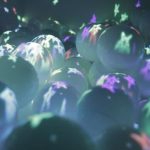
(A)I Feel
[Isarun Chamveha] [Witaya Junma]
Categories: [Installation] -
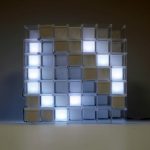
7x7
[Yuichiro Katsumoto]
Categories: [3D & Sculpture] -
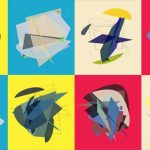
Abstract Reality
[Jieliang Luo]
Categories: [2D & Wall-Hung] -
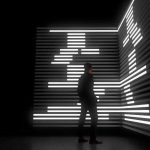
B/W Mind
[Chawanan Inkumnoi] [Pongpat Srisumran]
Categories: [Interactive & Monitor-Based] -

Embodisuit
[Sophia Brueckner] [Rachel Freire]
Categories: [3D & Sculpture] -
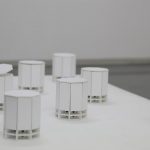
etheroid
[Jun Fujiki]
Categories: [Installation] -
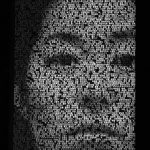
Face of City
[Jae Hyung Lee] [Jung Min Park]
Categories: [2D & Wall-Hung] -
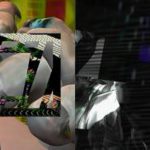
from this side of space to the other sid...
[Benjamin Rosenthal]
Categories: [Animation & Video] -
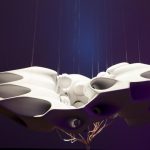
HIVE
[Akshay Cadambi] [Sölen Kiratli]
Categories: [Installation] -
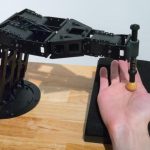
I Touch You And You Touch Me
[Jeff Thompson]
Categories: [Electronic/Robotic Object] -

Langjiao - Beinan Road
[Ching-Hsaing Hu] [Pey-Chwen Lin]
Categories: [Augmented Reality/Virtual Reality] -
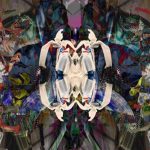
Mantra
[Hwayong Jung]
Categories: [2D & Wall-Hung] -

Mind-Body Dualism
[William Robertson] [Alfredo Salazar-Caro]
Categories: [Augmented Reality/Virtual Reality] -
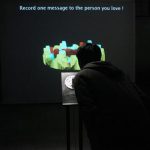
Record one message to the person you lov...
[Chia-Hsiang Lee] [Johnson Liew]
Categories: [Installation] [Interactive & Monitor-Based] -
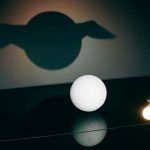
Remnance of Form
[Sang-won Leigh] [Ann Paradiso]
Categories: [Installation] -
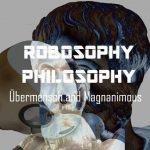
Robosophy Philosophy: Übermensch and Ma...
[Sasa Arsovski] [Adrian David Cheok]
Categories: [Installation] -
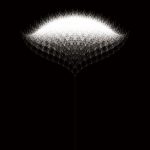
the Ghost in the Dandelion
[Scottie Chih-Chieh Huang]
Categories: [Installation] [Interactive & Monitor-Based] -
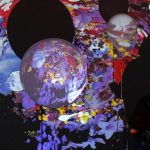
Wandering World
[Peter Williams] [Sala Wong]
Categories: [Installation] [Interactive & Monitor-Based]
Exhibition Writings and Presentations:
-
Title:
(A)I Feel
Author(s):
Category: Sketch / Art Talk
Abstract Summary:
Is it possible for machines to feel emotions? As we know for now, machines have no emotion. But if we humans teach them, will they be able to learn? (A)I FEEL is a project dedicated to find answers to our questions by creating a teaching & learning process between humans and a machine. To teach the machine, it asks each user to draw a picture which represents a specific emotion. Then, to demonstrate what the machine has learned, users can draw pictures to portray his/her emotion at the moment. Using Convolutional Neural Network (CNN), the machine will interpret user’s emotion into joy, sadness, anger, fear or disgust and colors the picture according to the emotion. The whole process will be visualized as an interactive installation which encourages people to participate in the project.
Title: 7x7
Author(s):
Category: Sketch / Art Talk
Abstract Summary:
We live surrounded by displays such as TV, smartphone, computer. These bitmap displays consist of pixels arranged in a two-dimensional plane. 7×7 was created by re-arranging these pixels multidimensionally. This display consists of 49 pixels, and these pixels do not overlap in the front, at the back, up, down, left or right. Therefore, each pixel is able to represent all six directions. By using these 49 pixels, 7×7 expresses “Iroha,” which is an old Japanese pangram that expresses one of the aesthetics called “Mujo (impermanence and ever changing)”.
Title: Abstract Reality
Author(s):
Category: Sketch / Art Talk
Abstract Summary:
Abstract Reality is an interactive installation that creates 3D geometric art as an abstract expression of physical human bodies. The application takes viewers physical features and their relation to the physical space as inputs to generate and place basic geometric forms in a virtual 3D space. Each geometric shape, virtual position and orientation, and color are affected by individual viewer’s physical positions, movements, and dominant colors. The overall structure of the geometric shapes is controlled by a modified Voronoi diagram, a computational geometric algorithm, to explore novel aesthetics.
Title: B/W Mind
Author(s):
Category: Sketch / Art Talk
Abstract Summary:
We are in fact already cyborgs, replicating ourselves as avatar forms online. Our cellphones and computers act as extensions of our own neural networks, imparting a boundless knowledge of facts and figures. B/W MIND is an experiential piece designed to manifest the interconnection humans have with technology
Title: Embodisuit
Author(s):
Category: Sketch / Art Talk
Abstract Summary:
A collaboration between Sophia Brueckner and Rachel Freire, the Embodisuit allows its wearer to map signals onto different places on their body. It both critiques and offers an alternative to current trends in wearable technology. Most wearables harvest data from their users to be sent and processed elsewhere. The Embodisuit flips this paradigm. Informed by embodied cognition, the suit instead receives signals from an IoT platform, and each signal controls a different haptic actuator on the body. Knowledge can be experienced ambiently without necessitating the interpretation of symbols by the conscious mind. The suit empowers wearers to reconfigure their boundaries strengthening their connection to the people, places, and things that are meaningful to them. Furthermore, we hypothesize that by changing the way people live with data, it will change the type of data that people create.
Title: Etheroid
Author(s):
Category: Sketch / Art Talk
Abstract Summary:
An etheroid is a device that mediates an invisible “something” to exist in space. Each etheroid behaves autonomously, without any higher orders dictating how it is to behave. If you set a new etheroid near another one, the new etheroid will be added to the movements of the existing etheroids. Each propagates this behavior to one of the surrounding etheroids repeatedly. Thus, the movements of etheroids as a whole creates an invisible moving “something”. This concept is to create an atom of media for existence, which is invisible. The devices operate under a physical neural network. An infrared LED illuminates invisible lights within a certain range. Together with a general communication module called XBee, the etheroid uses XBee to send information from one to another. The information list corresponds to a temporary storage area. Since the list is constantly updated, operation will continue even if the number of etheroids increases or decreases.
Title: From This Side of Space to the Other Side of the Signal
Author(s):
Category: Sketch / Art Talk
Abstract Summary:
“from this side of space to the other side of the signal” utilizes footage produced on unique analog equipment from the early history of
video during a residency at Signal Culture (a contemporary version of the original Experimental Television Center in Owego, NY), and emerges from a nod to Michael Snow’s iconic structural film La Région Centrale. Virtual landscapes pumped through the analog system become caught amidst sets of “meaningless” signs/barriers and violent signals. Computer generated bodies and body parts glistening with video material generated via this system perform actions that queer the line between digital, physical and analog, homoeroticism and violence––entangled in a fragmented high-modernist grid. A voice from the other side of the signal attempts to lure the viewer into some act of connection, of crossing over, only to be perpetually interrupted by barriers of interference. “from this side of space to the other side of the signal” is a two-channel piece that engages both the history of early video tools and contemporary forms of 2D and 3D animation. Using these analog tools as a way of addressing the historicity of the body, and as a way of defining the space of bodies (via their moving textures) in novel as a way of engaging our contemporary hybrid experience. Queering the distinctions between subject, object, transmission, physicality and the ephemeral larger questions about the nature of our technocultural existence rise to the surface.
Title: Hive
Author(s):
Category: Sketch / Art Talk
Abstract Summary:
With HIVE, we intended to explore the idea of a sonic intelligence: learning, experiencing, reacting, and finally, “thinking” in sound. Can we model such a system? A system with a body whose morphology is based on picking up and sending sound signals, a system who can learn from its environment and evolve in its response, a pseudo ‘being’ that traces our sonic foot-print and projects our sonic reflection. Created via fusing aspects of sculptural form, spatial sound, interactive methods, and machine learning, HIVE is an art installation that explores the relationship between sound, space, body, and communication.
Title: I Touch You And You Touch Me
Author(s):
Category: Sketch / Art Talk
Abstract Summary:
We interact with our computers constantly, touching them more than we touch any person in our lives, and grooming them inside and out. For a month, I recorded all interactions with my phone and fed them into a machine learning system, which then output new, learned gestures. These “hallucinated” movements are awkward yet eerily accurate swipes, taps, and typing based on what my computer has learned from my interactions with it. Presented as an interactive sculpture, the gestures are enacted by a small robotic arm on the visitor’s palm as they sit at a low, altar-like table. Notions of “you,” “me,” and “I” are doubled, enacting the understanding of the machine and at the same time a self-portrait of my interaction.
Title: Langjiao - Beinan Road
Author(s):
Category: Sketch / Art Talk
Abstract Summary:
In Syuhai, where I grew up, there is an old trail that connects the “Puyuma to Longkiau”. My hometown and the area surrounding it is home to a large population of indigenous people, and their ancestral spirit is the hundred-pace pit viper. Therefore, I used a 360 degree camera to capture the the left and right sides of the trail, and converted the image to simulate a half-human, half-snake perspective. With these images, I invite viewers to put on the VR device, and together enter the imaginary world of a hundred-pace pit viper traversing this ancient trail. This work also discusses the human perspective, where we use our eyes to see the world in front of us, whereas the sounds we hear with our ears come from the two sides of us. In this work, viewers can switch from the human perspective to see the world from two sides through the eyes of the hundred-pace viper, and experience the wonder of the merging of your auditory and visual perception.
This psychological landscape created using the VR device not only takes us back along the path once taken by the ancestral spirit of the indigenous people, it also allows us to experience the blending of the real and virtual world.
Title: Mantra
Author(s):
Category: Sketch / Art Talk
Abstract Summary:
Project Mantra is digital panorama video that represents hyper-realistic landscape with collapse of human interaction expressed through movement and code generated visual images. This videos deal with perception, especially with aesthetic Korean traditional dances and the way recreate the landscape through software and simulation. In reviving and re-contextualizing traditional into digital scenes and contemporaneity, to directly combine a culturally deeply embedded art form with the tools of digitalization, and dominates the contemporary culture leading to a new art form. A traditional dance called Seungmu, which performs a human desire to overcome his suffering, presents dynamic and yet delicate movements, and its encounter with computer codes creates randomly but meticulously calculated images – a beauty created by human and images made by machine. Inside of endless communication between them, a new experiential form of vision and sound will be developed and provided.
Title: Mind-Body Dualism
Author(s):
Category: Sketch / Art Talk
Abstract Summary:
Mind-Body Dualism examines the topic of existence as a physical being and digital being simultaneously, adding nuance to the Cartesian idea of separation of mind and body and proposing yet a 3rd separation: The virtual body.
Title: Record One Message to The Person You Love!
Author(s):
Category: Sketch / Art Talk
Abstract Summary:
The title, “Record One Message to The Person You Love!”, invite the audience to stand in front of the voice reception installation and say a few words to their loved ones. These messages will be processed by the processing computer program in real-time and converted into dynamic data images according to audience’s volume and frequencies of voices. The messages can also be immediately converted into 3D printing model files, which can then be printed into unique white vinyl disc-shaped objects engraved with each person’s own identity markings. In the end, each of the 3D printed objects will be displayed on the wall. Audience will be able to use the AR interface on the mobile device to replay the messages and videos corresponding to each of the 3D prints. Also expresses the feelings one has towards a lover through just a few words during interaction with the work.
Through this work, we discuss how in the digital age, all of our messages may someday become souvenirs to be stored, printed, and replayed records. Through exhibition in different countries and locations, and the collection of messages to their loved ones by a large number of people, this installation has the potential to become a big database. Gradually, with an ever increasing number of messages recorded, it might even become a museum for sound and memory. Also expresses the feelings one has towards a lover through just a few words during interaction with the work.
Title: Robosophy Philosophy: Übermensch and Magnanimous
Author(s):
Category: Sketch / Art Talk
Abstract Summary:
In the project Robosophy Philosophy (Meeting Points: Übermensch and Magnanimous) robot are mixing words of Aristotle and Nietzsche (and their words are everybody words) based on calculations and algorithms. If grammar is the “metaphysics of the people,” as Nietzsche claimed, then discussions in the installation is “metaphysics of the machines” and as such ant-words or anarchistic grammar. It is a vision of transfer of knowledge in the future and present criticism of society and technoculture which is allowing brutal destruction of human context replaced with artificial and superficial. Key technical novelty presented in Installation Robosophy Philosophy is the combination of chatbot technologies and Recurrent Neural Network (RNN) models that will enable reinforcement learning in order to create artificial conversational agents who will achieve human level performance. The fact, that things can communicate with each other and with the humans enables unsupervised learning and reinforcement learning and knowledge multiplying opportunities.
Title: The Ghost in the Dandelion
Author(s):
Category: Sketch / Art Talk
Abstract Summary:
Dandelion is a virtual creature used data visualization, generative design, and facial recognitiontechniques to build the dynamical patterns of the virtual life to interact with people’s emotional and physiological expression in a soothing way. The core algorithm of Dandelion graphic is inspired from the genetic code, to make dandelion patterns do self-generation, transform morphology like natural evolution. The embedded series parameters are set from the viewer’s specific facial features when stand in front of it, grasp viewer’s emotional and physiological express as the performance of dandelion’s growing behavior. It would demonstrates a novel symbiosis of data visualization that embedded into a mirror brings functional aesthetics, healthcare thinking into our future living.
Title: Wandering World
Author(s):
Category: Sketch / Art Talk
Abstract Summary:
We imagine to use technology and reach from our senses and immediate surroundings. Wandering World represents an accumulation of attempts at connecting through physical and virtual activities. Over a one-year period and situated in different geographic (and predominantly political) locations (California and Indiana, USA), the artists simultaneously walked, connected to each other and world events through mobile technologies and using 360-degree, omnidirectional cameras to record images from their respective environments. Along with sounds, and extracted, amassed and whirling within concentric, virtual spheres, flowers compete for attention as subject matter – disorientating place, time, ideology, and thought process.




